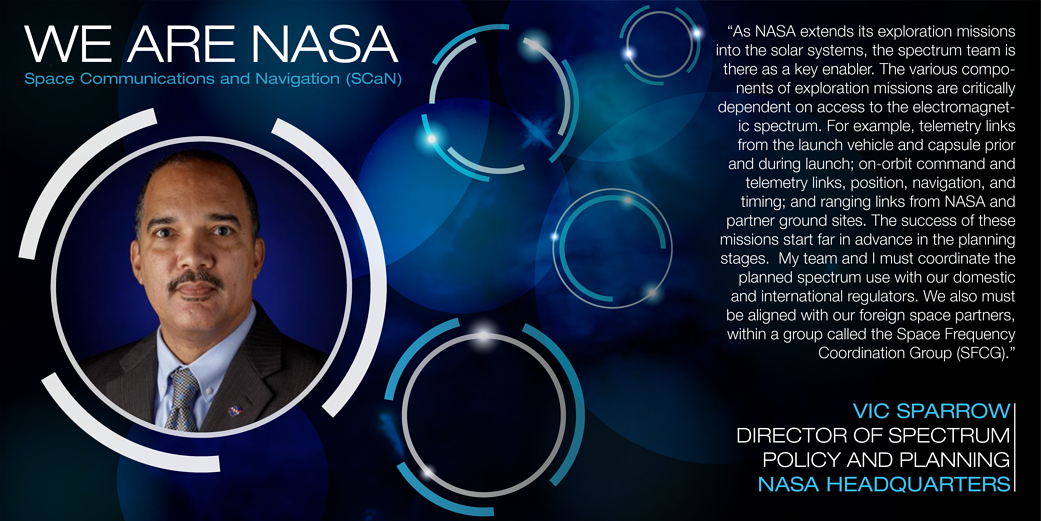What makes your job at NASA exciting or unique?
As the Director of Spectrum Policy and Planning, I am responsible for ensuring that all NASA spectrum dependent systems are assured appropriate access to the electromagnetic spectrum to meet their mission needs. My office resides in the Space Communications and Navigation (SCaN) Program, but I have an Agency responsibility. My job is to ensure that space communications, human exploration, aeronautics, and sciences spectrum needs are met. What makes it unique is that my job extends beyond being educated on NASA mission needs. My team and I must be well educated on our foreign space partners, our domestic agency, and industry spectrum needs. These entities all compete, to various extents, on the same electromagnetic spectrum. We have a very unique domestic process which includes our two spectrum regulators: the National Telecommunication and Information Administration (NTIA) and the Federal Communications Commission (FCC), so it makes for a much more complicated process to address everyone’s spectrum needs. For the international process, the State Department heads our U.S. interests, and we report to the International Telecommunications Union (ITU), who dispositions the world’s spectrum needs. These facets of my job are exciting, as my teams get to engage in technical, regulatory, policy, and economic deliberations on a daily basis, to ensure all of NASA needs are addressed.
How does your position contribute to NASA’s mission of exploration?
As NASA extends its exploration missions into the solar systems, the spectrum team is there as a key enabler. The various components of exploration missions are critically dependent on access to the electromagnetic spectrum. For example, telemetry links from the launch vehicle and capsule prior and during launch; on-orbit command and telemetry links, position, navigation, and timing; and ranging links from NASA and partner ground sites. The success of these missions start far in advance in the planning stages. My team and I must coordinate the planned spectrum use with our domestic and international regulators. We also must be aligned with our foreign space partners, within a group called the Space Frequency Coordination Group (SFCG).
What is your favorite thing about working for NASA?
The brand. The NASA brand is global. We are committed, passionate, and work very hard, and expect excellence in our job. But, when we have a moment to discuss our responsibilities, the NASA mission, and NASA future plans with the external community, I always get, “WE LOVE NASA.” Overseas, when we talk to folks, they also say, “WE LOVE NASA”. The brand is unquestionably global. People admire what we do. The next generation is watching and educating themselves in Science Technology Engineering and Math (STEM). The passion is there, and with that, you can’t help but love what you do, and appreciate how fortunate we are.





























